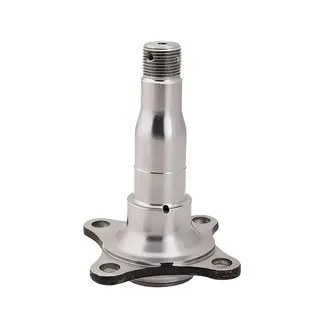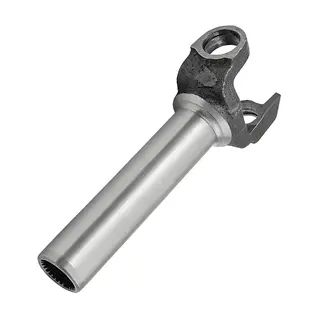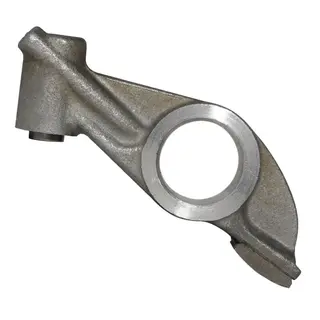In modern manufacturing, ring forgings play a crucial role. Whether in aerospace, shipbuilding, the energy industry, or rail transportation, ring forgings, with their outstanding performance and wide range of applications, have become indispensable key components of many high-end equipment. The manufacturing processes of ring forgings, especially ring rolling and roll-forging technology, are the core to ensuring their high quality and high performance. This article will delve into these advanced manufacturing processes, revealing how they provide strong support for modern industry.
Ring rolling is a unique plastic forming process in which ring blanks undergo continuous local plastic deformation with the help of a ring rolling machine (also known as a ring rolling mill, ring rolling machine, or expanding machine). Through this process, the wall thickness of the ring can be reduced, the diameter expanded, and the cross-sectional profile accurately formed. The deformation process of ring rolling is similar to mandrel piercing, and its core feature is the rotation of the tool and the continuity of deformation. This continuous local plastic forming process is a perfect combination of rolling technology and mechanical manufacturing technology. Compared with traditional free forging and die forging processes, it has significant technical and economic advantages.
Continuous Local Deformation: During ring rolling, the ring blank gradually undergoes plastic deformation under the rotation and pressing of the rolling tool. This deformation is continuous but limited to a local area, allowing the metal material to flow evenly under stress, thus achieving precise dimensional control and shape formation.
Surface Deformation Characteristics: Because the reduction per pass in ring rolling is usually small, it exhibits obvious surface deformation characteristics. This results in high surface quality of the processed ring and reduces the difficulty and cost of subsequent processing.
High Precision and Efficiency: Ring rolling can achieve high-precision dimensional control and shape formation, and due to its continuous processing method, production efficiency is relatively high. This gives ring rolling a significant economic advantage in large-scale production.
Ring rolling is widely applied in the manufacturing of various ring forgings, especially in occasions requiring high precision and high strength. For example, in the aerospace field, engine ring components need to withstand extremely high temperatures and pressures, and ring rolling ensures the dimensional accuracy and mechanical performance of these components. In the energy industry, pressure vessel rings for nuclear power plants are also often manufactured using ring rolling to meet strict performance requirements.
In the manufacturing of ring forgings, besides ring rolling, mandrel piercing is also a common process. Mandrel piercing is mainly used in the production of small-batch, small-sized rings. This process applies localized loading to the ring blank through a mandrel, causing the metal to flow in the circumferential direction, thereby achieving the purpose of hole expansion.
Local Loading and Overall Stress: During mandrel piercing, the metal in the deformation zone primarily flows tangentially, while also slightly increasing in width. This local loading allows the metal to bear stress evenly during deformation, thus ensuring the quality of the forging.
Dimensional Change Characteristics: Forgings after mandrel piercing usually have reduced wall thickness, expanded inner and outer diameters, and slightly increased width. This dimensional change characteristic makes mandrel piercing particularly suitable for manufacturing thin-walled ring forgings.
High Flexibility: Because mandrel piercing does not require complex equipment or molds, it has high flexibility in small-batch production. Processing parameters can be quickly adjusted according to different requirements, meeting diversified production needs.
Mandrel piercing has unique advantages in manufacturing small-batch, small-sized rings. For example, in some machinery manufacturing enterprises, a small number of ring components are needed for equipment maintenance or small-scale production. Mandrel piercing can quickly respond to these requirements and produce compliant ring forgings at low cost.
Ring forgings are workpieces or blanks obtained through forging deformation of metal. These forgings have high strength, high precision, high toughness, and good fatigue resistance, and can withstand significant impact and heavy loads. The manufacturing process of ring forgings involves applying pressure to the metal blank to induce plastic deformation, thereby obtaining parts with certain mechanical properties and shape accuracy.
High Strength and Precision: Through forging, the internal structure of ring forgings becomes denser, and grains are refined, significantly improving the strength and hardness of the material. At the same time, the precise forming during forging ensures high dimensional and shape accuracy, reducing the difficulty of subsequent processing.
Superior Fatigue Resistance: The internal grain flow of ring forgings precisely follows the contour of the part, forming continuous flow lines. These flow lines effectively reduce the generation of fatigue cracks, thus improving fatigue resistance. In addition, a reasonable fiber structure distribution enhances material toughness, enabling it to withstand greater alternating stress.
Optimized Microstructure: During forging, defects such as porosity and voids are eliminated, and the microstructure is optimized. This not only improves the mechanical properties of ring forgings but also enhances their physical properties, such as electrical conductivity and thermal conductivity.
Ring forgings are widely used across industrial fields. In aerospace, engine components, landing gear, and other critical parts often use ring forgings. In shipbuilding, hull support structures, propellers, and other components rely on ring forgings. Moreover, in the energy industry and rail transportation, ring forgings also play an important role.
Roll-forging technology is an important branch of modern forging. It combines the advantages of open-die forging and radial-axial rolling, enabling the production of high-strength, high-precision ring forgings. This technology mainly includes two stages: open-die forging and radial-axial rolling.
Open-die forging is the first step in roll-forging technology, mainly aimed at preliminarily forging the metal blank, densifying its structure, and forming the basic dimensions and shape of the ring. This step provides a good foundation for subsequent rolling. During open-die forging, the metal blank undergoes plastic deformation under the pressure of a forging hammer or press, optimizing its internal structure and improving mechanical properties.
Radial-axial rolling (also known as ring rolling, roll-expanding, or ring expansion) is the core stage of roll-forging technology. In this process, the perforated ring blank is heated to a high temperature and, under the rotation and pressing of the ring rolling machine, undergoes continuous radial expansion and axial wall thinning. This continuous forming process aligns the metal flow lines with the circumferential direction of the workpiece, significantly improving the fatigue resistance and load-bearing capacity of the ring.
High Precision and Efficiency: Roll-forging technology achieves high-precision dimensional control and shape forming. Its continuous processing also ensures high production efficiency, giving it significant economic advantages in large-scale production.
Suitable for Large Component Manufacturing: Compared with open-die forging, which is limited by press column spacing, radial-axial rolling can easily produce ultra-large diameter cylindrical forgings. This provides more possibilities for manufacturing large equipment, such as large pressure vessels in the energy industry.
Reduced Energy Consumption and Cost: Roll-forging requires fewer heating cycles and has high forming precision, which shortens the manufacturing cycle, reduces machining allowances and energy consumption, and significantly lowers overall production costs.
Ring forgings, due to their excellent performance and wide application range, have become indispensable key components in modern industry. In aerospace, ring forgings are used to manufacture engine components, landing gear, and other critical parts that must withstand extremely high temperatures and pressures while requiring high strength and precision. In shipbuilding, ring forgings are used to manufacture hull support structures, propellers, and other components that require good fatigue resistance and corrosion resistance. In the energy industry, ring forgings are used in nuclear pressure vessels, wind turbine main shafts, and other components that must withstand high stress and long-term operation. In rail transportation, ring forgings are used to manufacture train wheelsets, gearboxes, and other parts that require high strength and precision to ensure safe operation.
In summary, the manufacturing processes of ring forgings, especially ring rolling and roll-forging technology, play a crucial role in modern industry. These processes, through precise plastic deformation and efficient production workflows, ensure the high strength, high precision, and high reliability of ring forgings. Whether it is the continuous local deformation of ring rolling, the traditional process of mandrel piercing, or the innovative combination of roll-forging technology, all provide diversified solutions for manufacturing ring forgings. Ring forgings, with their outstanding performance, are widely applied in aerospace, shipbuilding, the energy industry, and rail transportation, becoming indispensable key components of high-end equipment. These advanced manufacturing processes not only improve production efficiency and reduce production costs but also significantly enhance product quality and performance, meeting the strict requirements of modern industry for high-performance ring forgings.



